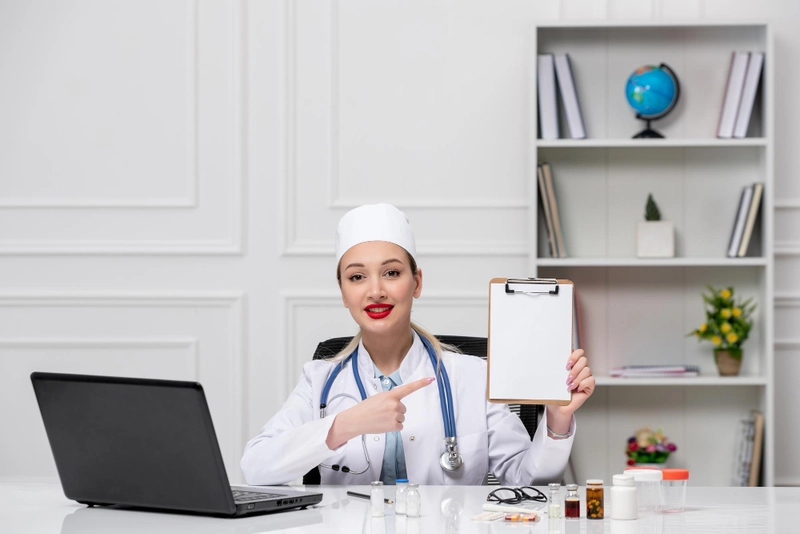- Published on: Aug 17, 2023
- 2 minute read
- By: Secondmedic Expert
Vaping Alarm: Unmasking The 30-Day Threat To Young Lungs From E-Cigarettes
In an age where the allure of modern alternatives to traditional tobacco use seems irresistible, a recent study has cast a harsh spotlight on the concerning health risks associated with e-cigarettes. The alarming revelation is that young people could be at risk of facing severe respiratory problems after just 30 days of e-cigarette use. This revelation comes as a sobering wake-up call, shedding light on the hidden dangers of what was once marketed as a 'healthier' alternative to smoking.
A Pervasive Trend: E-Cigarettes and Youth Appeal
E-cigarettes, often touted as a safer alternative to traditional tobacco products, have gained remarkable popularity, especially among the younger demographic. Their sleek designs, flavored cartridges, and the perception of being less harmful than traditional cigarettes have made them appealing to those looking for an escape from conventional tobacco use. However, recent research is uncovering a harsh reality that challenges these assumptions.
Unveiling the Study: A Startling Timeline of Health Risks
The study, published recently, has sent shockwaves through the medical and public health communities. It indicates that within just 30 days of using e-cigarettes, young individuals might be exposed to a heightened risk of encountering serious respiratory problems. These problems can range from impaired lung function to more severe conditions that significantly affect the quality of life.
Delving into the Research: Connecting the Dots
The study highlights a crucial fact that many might have overlooked – the notion that e-cigarettes, despite their packaging as a 'healthier' alternative, are not without their own set of risks. The research suggests that young e-cigarette users are at an increased risk of experiencing symptoms like coughing, wheezing, and shortness of breath within a surprisingly short time frame.
Understanding the Mechanisms: Unmasking the Risks
But what exactly is causing these adverse effects? The answer lies in the very ingredients that were once believed to make e-cigarettes a 'healthier' option. The study reveals that the chemicals present in e-cigarettes, when vaporized and inhaled, can lead to irritation and inflammation in the respiratory system. This inflammation can potentially pave the way for more serious respiratory problems over time.
E-Cigarettes vs. Traditional Tobacco: Not as Different as Assumed
The perception that e-cigarettes are drastically different from their traditional tobacco counterparts is being challenged. While it's true that e-cigarettes lack the tar and many of the harmful chemicals found in combustible tobacco, they are by no means harmless. The inhalation of aerosolized chemicals from e-cigarettes can still have detrimental effects on the delicate lung tissues, particularly in young individuals whose respiratory systems are still developing.
The Youth Quandary: Flavors and Appeal
One of the key drivers behind the popularity of e-cigarettes among young people is the array of enticing flavors. These flavors, ranging from fruity to dessert-inspired, have drawn in a new generation of users. However, they have also inadvertently contributed to the surge in youth e-cigarette use, which in turn has exposed more young individuals to the associated health risks.
Implications for Public Health and Policy
As the findings of this study continue to reverberate, the question arises – what steps can be taken to mitigate these risks? The study underscores the need for more comprehensive research into the long-term health effects of e-cigarette use, especially among young individuals. Furthermore, it highlights the urgency for policymakers to enact regulations that address the marketing tactics targeting youth and increase awareness about the potential risks.
The Call for Greater Awareness: Empowering Informed Choices
The study serves as a stark reminder that the seemingly harmless allure of e-cigarettes may come at a cost that's dearer than anticipated. The onus now falls on the young individuals who are most vulnerable to these health risks. Educating themselves about the potential dangers, understanding the risks associated with e-cigarettes, and making informed choices can go a long way in safeguarding their health.
Conclusion: A Reality Check in the World of Vaping
The study's findings provide a much-needed reality check for both the e-cigarette industry and the young individuals who may have been drawn in by its allure. As we grapple with the implications of this research, it's crucial to remember that the choices we make today can significantly impact our health in the long run. The narrative surrounding e-cigarettes is evolving, and it's imperative that young people equip themselves with knowledge to make informed decisions about their well-being.
Read FAQs
A. The perception that e-cigarettes are a safer alternative to traditional tobacco products is being challenged by recent research. While e-cigarettes lack many harmful chemicals found in combustible tobacco, they still carry risks. The aerosolized chemicals in e-cigarettes can lead to respiratory irritation and inflammation, potentially causing serious health problems, especially among young users.
A. Recent research suggests that young individuals who use e-cigarettes could experience respiratory symptoms like coughing, wheezing, and shortness of breath within as little as 30 days of use. The chemicals present in e-cigarettes, when vaporized and inhaled, can cause irritation and inflammation in the respiratory system, setting the stage for more severe respiratory problems over time.
A. Young individuals can protect their respiratory health by becoming informed about the risks associated with e-cigarette use. Educating themselves about the potential dangers, understanding the risks posed by e-cigarette chemicals, and making informed decisions can help safeguard their health. Additionally, spreading awareness among peers and considering healthier alternatives can contribute to better long-term respiratory well-being.









